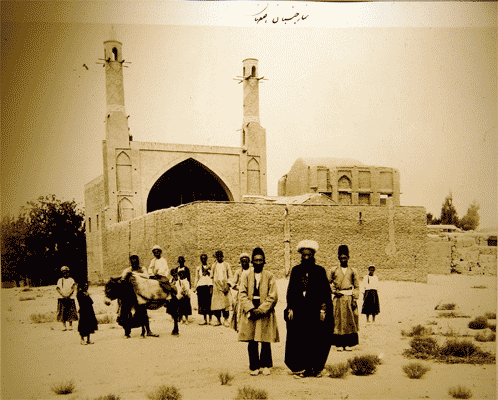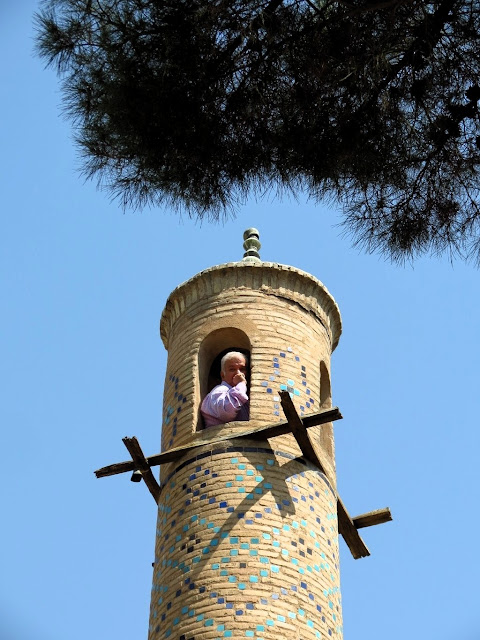Unlike most other historic sites in Isfahan that are located close together in the center of the city, Menar Jonban (منار جنبان) is located on the boundaries of the city. Menar Jonban, a historical building with a mausoleum and two minarets, is located 7 kilometers west of Isfahan and dates back to Safavid period. It is mausoleum of a hermit named Amo Abdollah’e Karladani and was built in 716 A.H. (1316 A.D.), designed by Sheikh Bahai.
This building includes two minarets and they are 17 meters high from the ground level, the distance between them is about 10 meters and they are the main attraction of this mausoleum. Because of the ratio between the height and width of the minarets, any movement produced in one of the minarets is automatically reflected not only in the other minaret, but even in the whole balcony. The minarets are made so that if one of them is moved the second one and the whole building will shake. For a long time, this curious phenomenon was attributed to the magic powers of the holy priest buried under the balcony.
The minarets are actually located on the top front part of the mausoleum. A narrow stairway in the back of the mausoleum leads to the roof where the minarets are located. Previously visitors were allowed to climb the minarets and do the shaking themselves. To protect the minarets, the shaking is now limited to the professional staff.
The unique characteristic of the shaking of the minarets, and the entire building itself for the matter, has been repeatedly studied. The findings of most of such research indicates that the specific dimensions and proportions of the building and minarets and even the material forming the bricks used for the building contributes to the vibrations. Following physical experiments on the building, it was concluded that this phenomenon is similar to the mirror image vibrations observed when connecting two vertical identical pieces of string to a connecting horizontal one. Should the two vertical strings be of different lengths or weights the same results would not be achieved.
However, such a theory also has its skeptics and is dismissed as a mere coincidence under the guise that most buildings also have such vibrations (although on a smaller scale) and it’s only the height of the minarets that make it so visible in this particular case.
The balcony of the structure is accessible through a spiral staircase. The balcony of the mausoleum has been ornamented with four-pointed and polygonal azure tiles, and the inscription on the tombstone reads as follows: This is the tomb of the virtuous, god-fearing Sheikh, "Amu Abdollah ibn Muhammad ibn Mahmood Saqla, may God bless his soul.”











i always wondered how one shakes and the other follows?!?!?!
ReplyDeleteI'm not sue, something about the architecture and the way the towers were connected. It seems like it's only occasionally working now and constantly needs repairs and renovations.
ReplyDelete